Djémila, Algeria: a spectacular Roman city that’s said to rival all others
In 1839, Ferdinand Philippe, son of King Louis-Philippe of France, commanded a military expedition with the intention of conquering eastern Algeria. Near the border of Mauretania, he came across the ruins of the ancient town originally known as Cuicul. He planned to take the triumphal arch back to Paris, but died shortly after and for years the site was forgotten. In 1909, during the construction of a modern road, the ruin was rediscovered. Archaeological work continued until 1957 and led to the reconstruction of many ancient monuments.
A Roman outpost that thrived
Cuicul was founded in AD 96 by Emperor Nerva on the site of an existing village. The Romans had a firm control over coastal towns and needed control of the mountain region which formed a barrier against the desert sands, but did not stop raiding nomadic tribes. To protect these Roman territories the emperor distributed land to veterans to farm and build a series of fortifications at the edge of the desert. Soon families from other towns and provinces moved in.
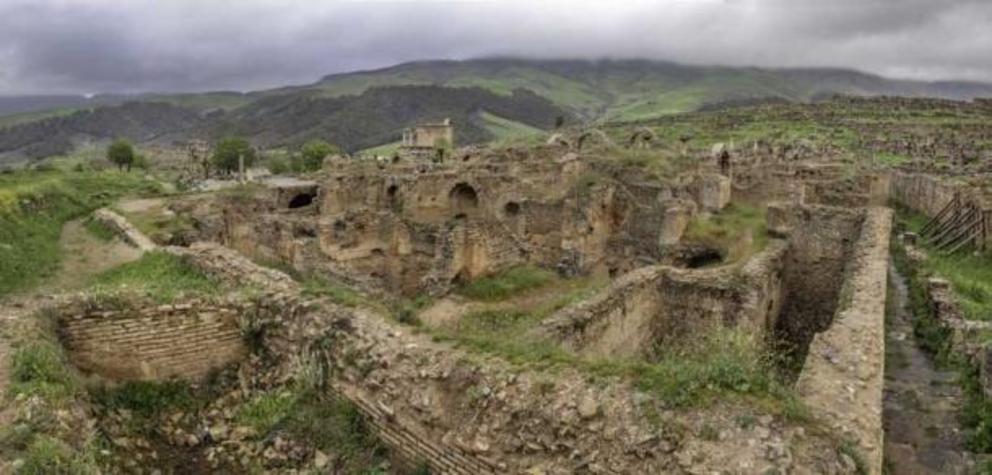
Roman ruins at Djemila ( tynrud / Fotolia)
Cuicul was a typical Roman town with straight streets and occupied a defensive position on a spectacular rocky outcrop at an altitude of 3000 feet (900m) despite the mountainous terrain. Two ravines limited the length of the east to west streets, but Cardo Maximus ran north to south and was as grand as any other colonnaded street which were the pride of Roman towns.
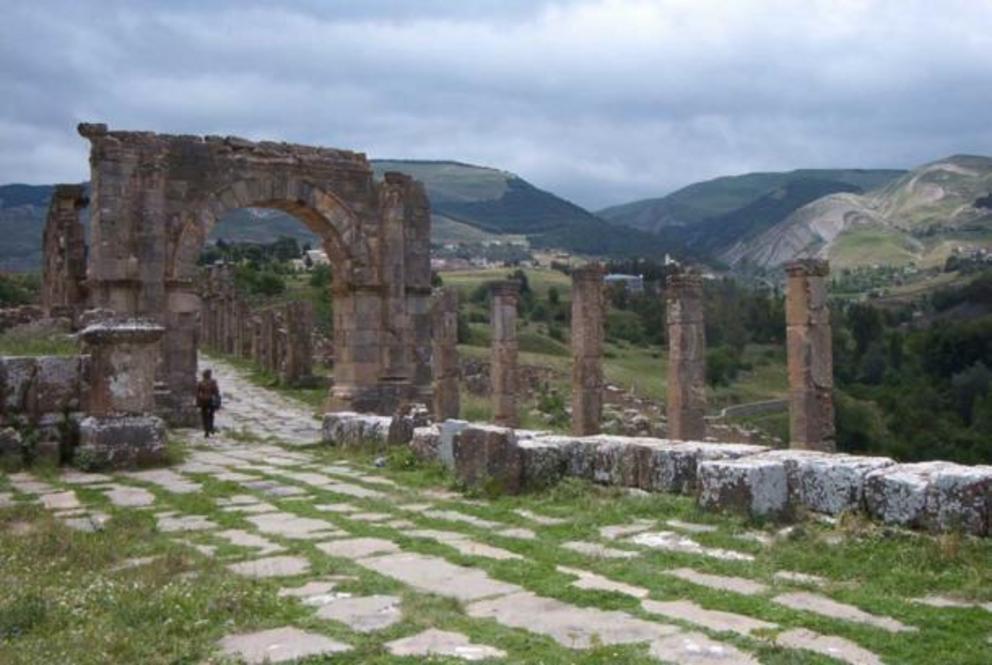
Cardo Maximus ( CC BY-SA 3.0 )
Entering Cuicul from the north on Cardo Maximus, v isitors may notice signs indicating a brothel. Phalli above the doorways of ordinary Roman homes, however, were a very common symbol used to deflect bad luck and bestow blessings upon the inhabitants.
Ancient travelers could rest and wash at the baths between the Old Forum and Cardo Maximus. Archaeologists were able to identify and partially reconstruct some of the halls, columns and capitals as well as the heating structures.
The Forum, in the town center, had a large temple dedicated to three gods while the smaller temple of Venus Genetrix is one of the finest sights of the Old Town. An inscription nearby celebrates the construction of public granaries, an indication that Cuicul thrived by trading grain.
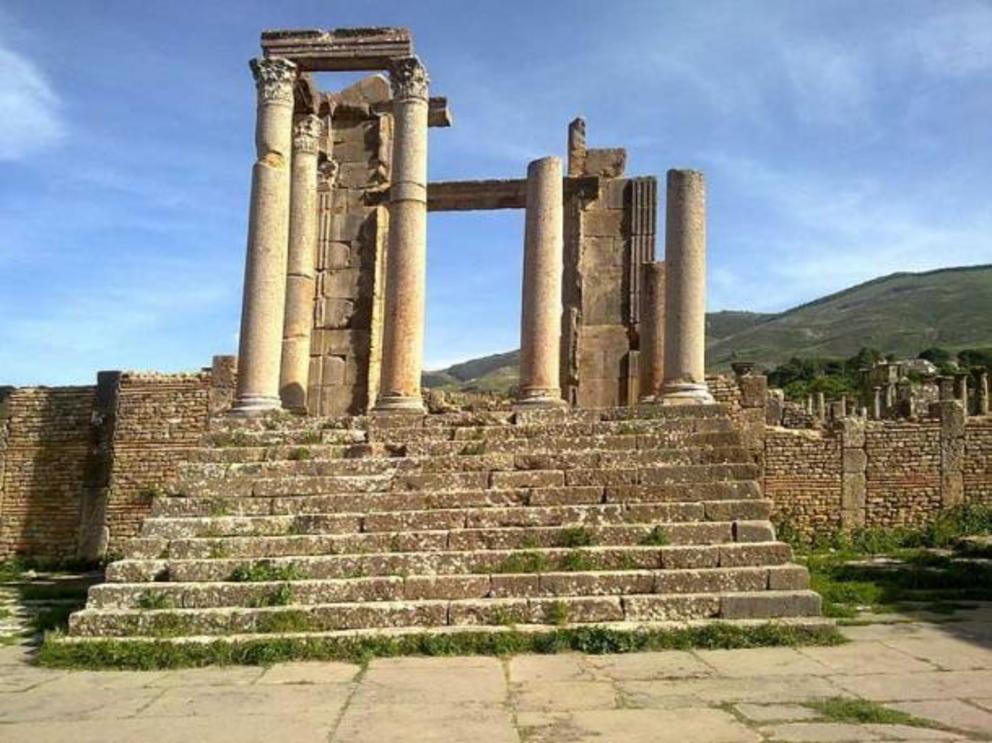
The Temple of Venus Genetrix ( CC BY-SA 3.0 )
The new expansion included every luxury
Towards the middle of the second century, Cuicul was bursting at the seams. A new neighborhood was developed south of the Old Forum during the last years of the reign of Emperor Septimius Severus and the first years of his son Caracalla. The many inscriptions which celebrated the initial constructions had to be changed after Caracalla killed his brother and co-emperor Geta in December AD 211.
French archaeologists identified many buildings that marked the expansion. They included private buildings and homes decorated with mosaics, an arch erected by Emperor Caracalla, the temple to the family of Emperor Septimius Severus, a new forum, a theatre, and baths.
The mosaics found at Cuicul are similar to others in Roman Africa in that they depicted mythological events, hunting scenes and geometrical motifs. Many of these are now on display in the museum.
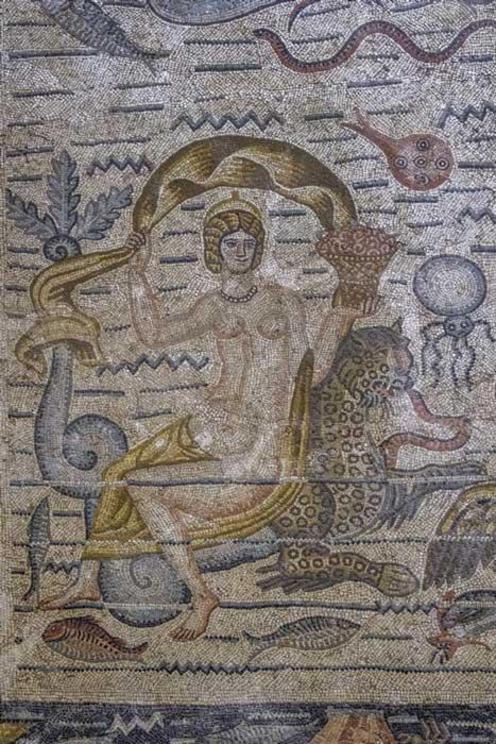
A stunning mosaic found at Cuicul, Djemila ( tynrud / Fotolia)
A large square separated the old town from the new development. It was crossed by Cardo Maximus and the new extension was marked by an arch celebrating Emperor Caracalla , his mother Julia Domna and his deceased father Septimius Severus in AD 216. The arch retains the bases of the three statues which stood on top. The inscription confirms the importance of Julia Domna, who perhaps held power as it places her second, after Emperor Caracalla, but before her deceased husband, Septimius Severus.
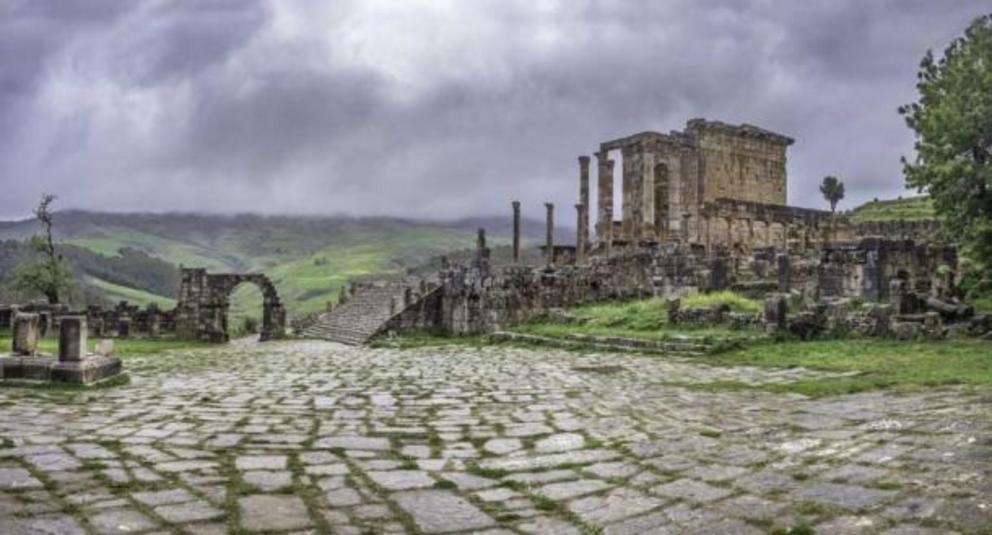
View of forum and temple in Roman town of Djemila ( tynrud / Fotolia)
Archaeologists have identified buildings and facilities located in the square but were unable to reconstruct them. They included the high podium of a temple where announcements could be made, a cloth marketplace, a high cistern and public latrines. The latrines were regarded as a place for socializing and the flushing system must have been effective thanks to the aqueducts which controlled the flow of water. Cuicul also had a number of public fountains made possible by a conduit built inside which carried water to the top. These, along with the sewers, were used to keep the markets and shops clean.

Public Latrine, Djemila (Bernard, MG/ CC BY-SA 2.5 )
The Roman theatre of Djémila, which could seat approximately 3,000, was built in 161 AD and stood on the slopes of the eastern ravine. The three entrances from where the actors made their appearance are still visible.
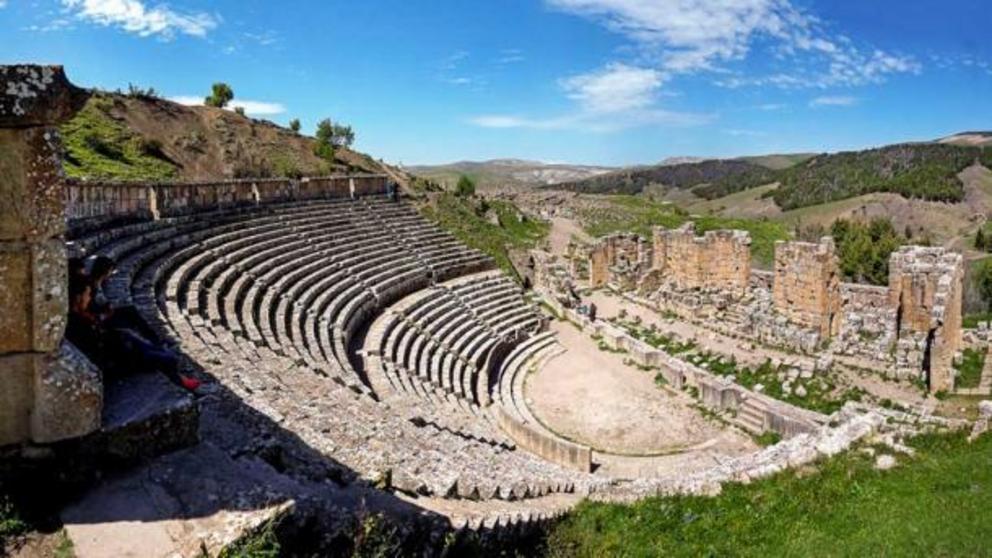
The Roman theatre of Djémila (Public Domain )
In smaller Roman towns, the forums also functioned as markets, but Cuical had a specific food market with access from Cardo Maximus which is still evident and the forum was used for religious and political activities only.
The Great Baths, built in 183, had all the mod cons of the day - some of the marbles and mosaics which decorated them are still in situ. They are located near the top of the hill where a Christian neighborhood was eventually developed close to a large church built by Cresconius, Bishop of Cuicul.
Cuicul fell to the Vandals in AD 431, had a brief renaissance under the Byzantines during the sixth century, only to be abandoned after the Arab invasion in the seventh century when it was renamed Djémila, meaning ‘beautiful’. In 1982 it became a World Heritage site as: “Djémila bears exceptional testimony to a civilization which has disappeared. It is one of the world's most beautiful Roman ruins.”
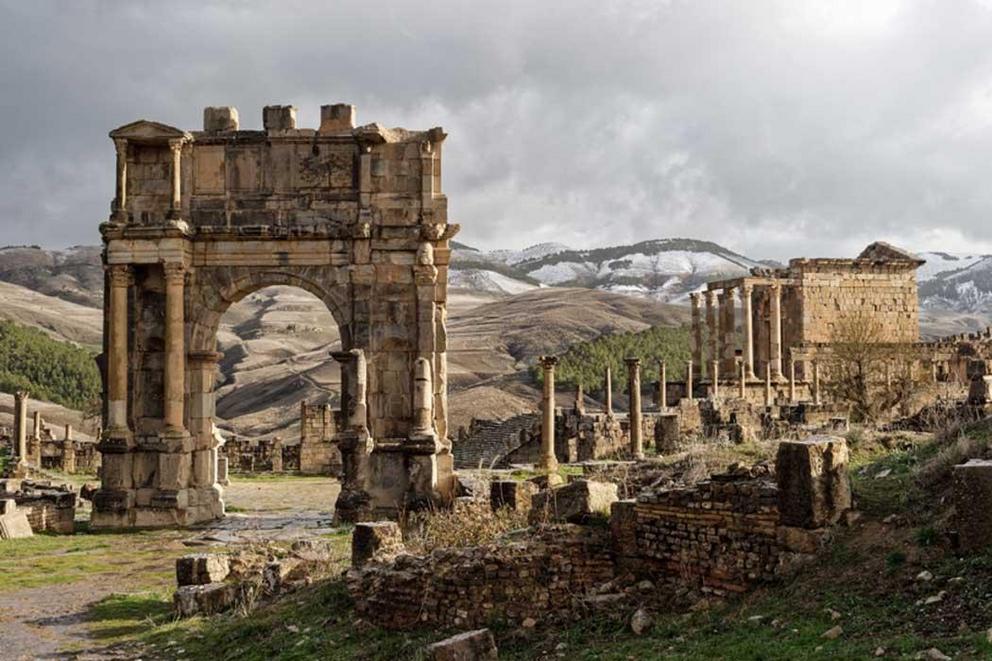
Panarama of Djemila, Algeria Source: ( cyrilpreiss / Fotolia)
For full references please use source link below.
Video can be accessed at source link below.
